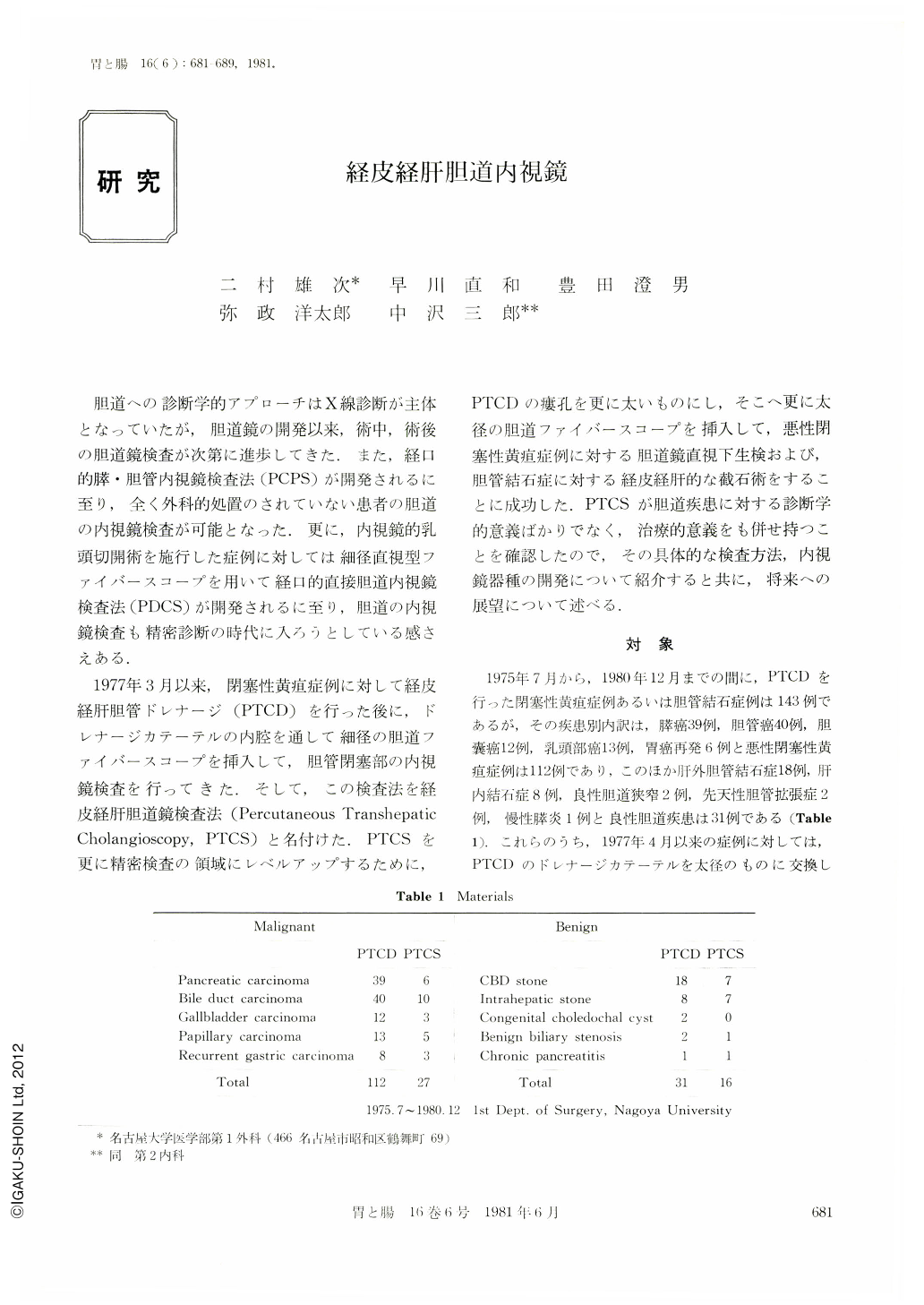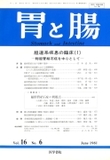Japanese
English
- 有料閲覧
- Abstract 文献概要
- 1ページ目 Look Inside
- サイト内被引用 Cited by
胆道への診断学的アプローチはX線診断が主体となっていたが,胆道鏡の開発以来,術中,術後の胆道鏡検査が次第に進歩してきた.また,経口的膵・胆管内視鏡検査法(PCPS)が開発されるに至り,全く外科的処置のされていない患者の胆道の内視鏡検査が可能となった.更に,内視鏡的乳頭切開術を施行した症例に対しては細径直視型ファイバースコープを用いて経口的直接胆道内視鏡検査法(PDCS)が開発されるに至り,胆道の内視鏡検査も精密診断の時代に入ろうとしている感さえある.
1977年3月以来,閉塞性黄疸症例に対して経皮経肝胆管ドレナージ(PTCD)を行った後に,ドレナージカテーテルの内腔を通して細径の胆道ファイバースコープを挿入して,胆管閉塞部の内視鏡検査を行ってきた.そして,この検査法を経皮経肝胆道鏡検査法(Percutaneous Transhepatic Cholangioscopy, PTCS)と名付けた.PTCSを更に精密検査の領域にレベルアップするために,PTCDの瘻孔を更に太いものにし,そこへ更に太径の胆道ファイバースコープを挿入して,悪性閉塞性黄疸症例に対する胆道鏡直視下生検および,胆管結石症に対する経皮経肝的な截石術をすることに成功した.PTCSが胆道疾患に対する診断学的意義ばかりでなく,治療的意義をも併せ持つことを確認したので,その具体的な検査方法,内視鏡器種の開発について紹介すると共に,将来への展望について述べる.
Since July, 1975, percutaneous transhepatic drainage of the bile duct (PTCD) has been performed in 143 cases of obstructive jaundice. In order to have direct observation of an obstructing lesion, a drainage catheter is exchanged for a bigger step by step. And a cholangioscope is inserted into the drainage catheter, or directly to the fistula of the catheter and the inside of the bile duct is examined. We named this new technique percutaneous transhepatic cholangioscopy (PTCS).
Various sized drainage catheters and slender cholangioscopes were deviced to make PTCS more useful examination. And at the time of PTCS, a biopsy of the lesion is also taken under cholangioscopic observation.Then PTCS enables us to differentiate whether obstructive jaundice is benign or malignant, to determine the extent of cancerous tumors and to detect multiple foci before operation. These are the three diagnostic advantages of PTCS.
Furthermore PTCS was utilized as the therapeutic endoscopy. Transhepatic cholangjoscopic lithotomy was performed on a patient with bile duct stones or intrahepatic stones, for whom a laparotomy could not be applied.
Among the 143 cases of PTCD,PTCS was performed in 43 cases and good results were obtained. We discussed its diagnostic and therapeutic advantages by presenting our retrospective cases.

Copyright © 1981, Igaku-Shoin Ltd. All rights reserved.


